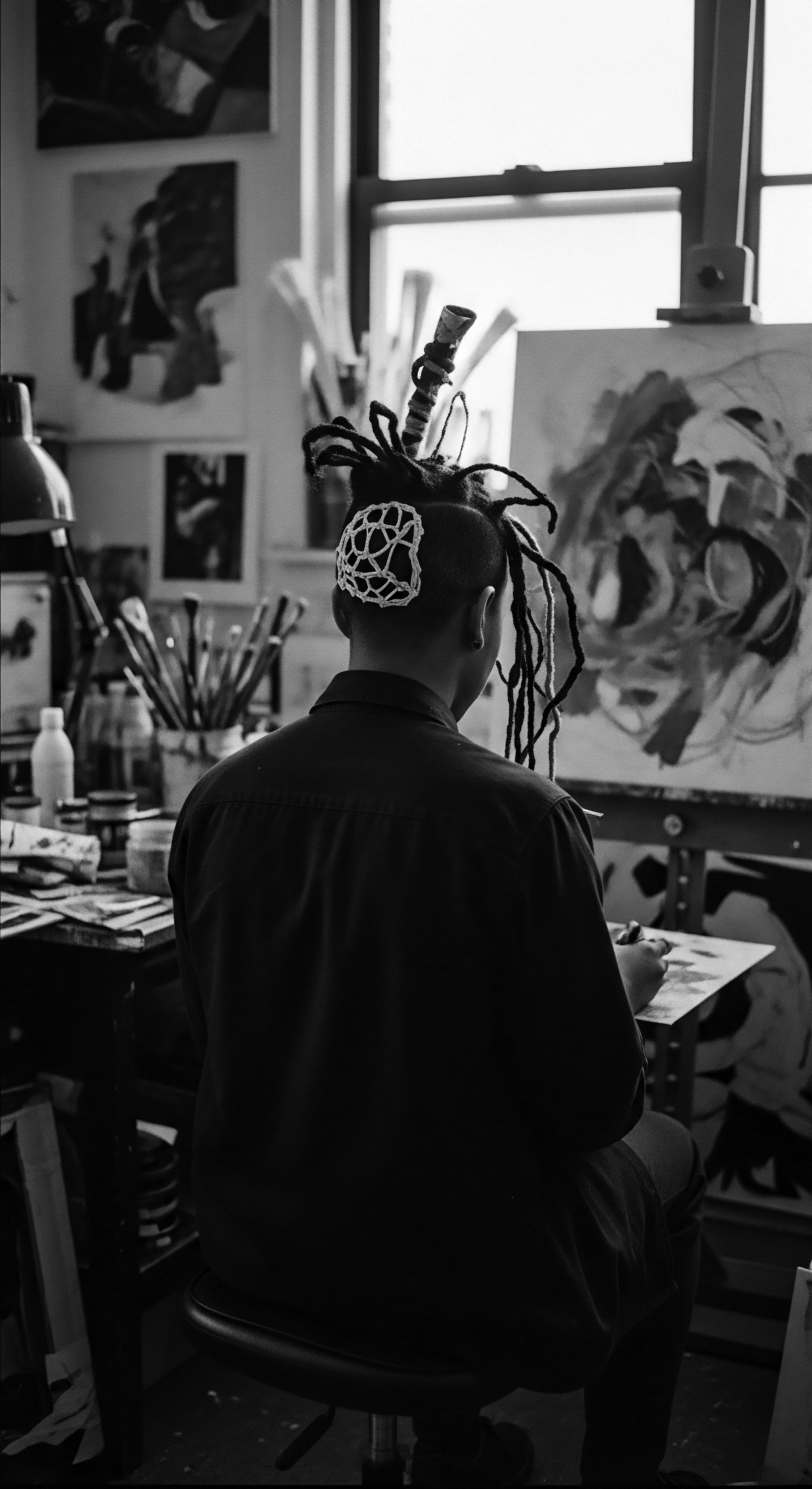
Roots
To journey back to the genesis of textured hair care, to truly hear the whispers of ancestral wisdom, is to step into a living archive. For those with hair that coils, kinks, and curls, protection has always been an inherent aspect of its very existence, not merely a trend or a modern concern. Our crowns, magnificent in their diversity, have faced the sun’s ardor, the wind’s drying touch, and the very dust of the earth for millennia.
Understanding how our forebearers shielded these precious strands reveals a heritage of profound ingenuity, born from deep attunement to their environments and the botanical gifts around them. This knowledge, passed through generations, forms the bedrock of Roothea’s understanding, connecting the elemental biology of textured hair to ancient practices.

Hair Anatomy and the Ancestral Veil
Textured hair, at its core, holds a distinct architecture that sets it apart. Its elliptical shaft, often featuring multiple twists along its length, creates natural points of vulnerability where the cuticle, the hair’s outermost protective layer, can lift. This characteristic shape, while yielding remarkable volume and versatility, also renders it more susceptible to moisture loss and external stressors.
The spiraling nature means natural oils, known as sebum, struggle to travel down the hair shaft evenly, leaving ends particularly prone to dryness. Early communities, long before the microscope revealed these cellular structures, understood this inherent need for preservation through lived experience and keen observation of their own bodies and the natural world around them.
Consider the dry, arid climates prevalent across parts of Africa. Here, the relentless sun and persistent winds could desiccate exposed hair, leading to breakage and brittleness. Ancestral populations recognized this environmental assault on their strands. They learned, through trial and error, which materials from their local flora and fauna could serve as a protective shield.
This was a science born of necessity, refined by generations of practice. The application of rich, lipid-heavy substances, for example, served to create a physical barrier, sealing the cuticle and preventing the escape of precious internal moisture while simultaneously deflecting harsh environmental elements.
The intrinsic architecture of textured hair, characterized by its elliptical shape and natural twists, made ancestral protection a fundamental practice.
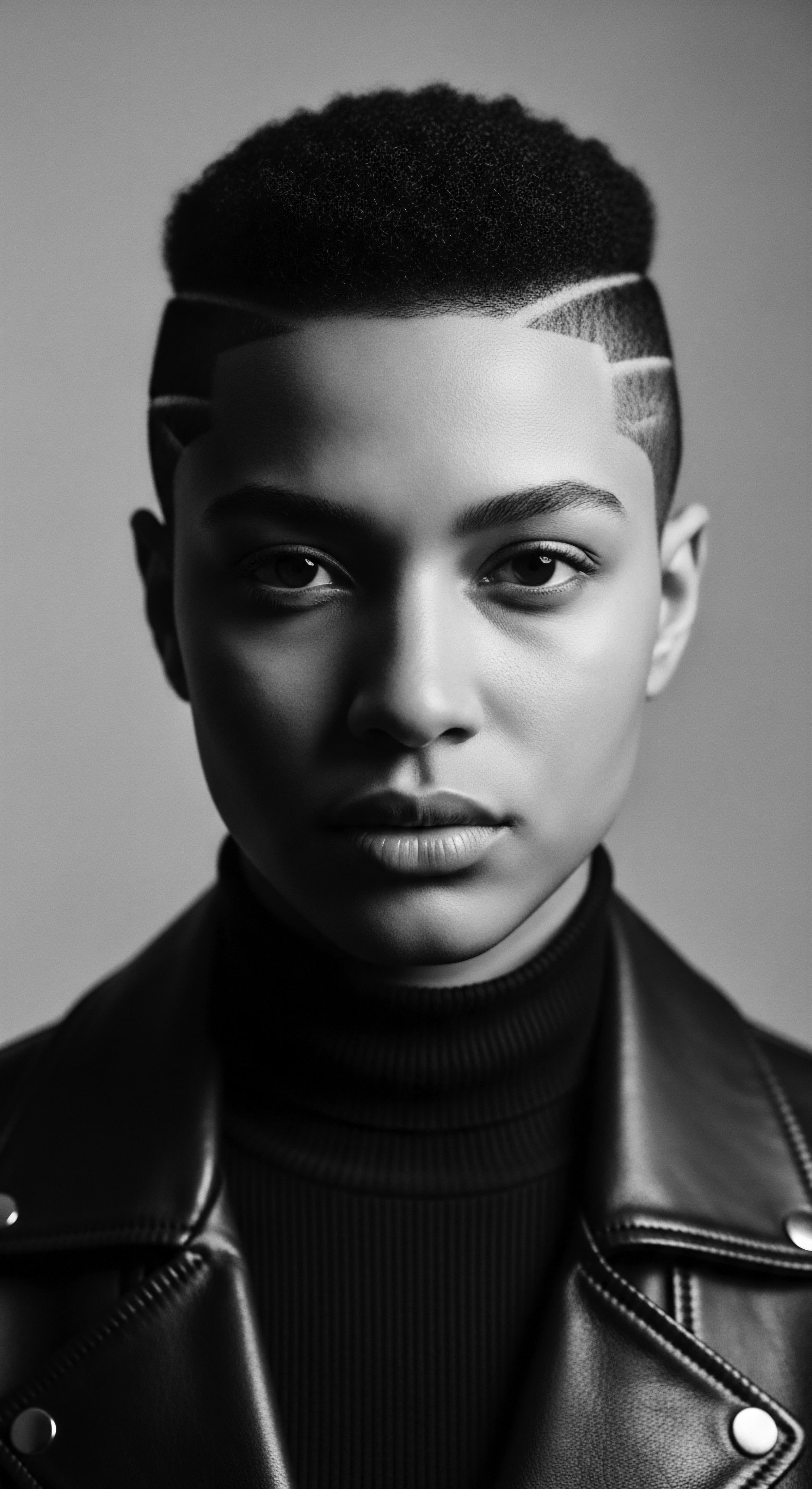
Understanding Hair’s Physical Nature
The very physical nature of textured hair, with its unique bends and coils, provides a certain natural resilience, yet also presents specific challenges against the elements. The cuticle layers, which lie like shingles on a roof, tend to be more raised at the curves of a coil. This means moisture can escape more readily, and external agents, such as dust particles or harsh winds, can more easily disrupt the strand’s integrity. The ancestral response was not to fight this nature, but to work with it, creating symbiotic relationships between hair and protective substances.
- Lipid-Rich Butters ❉ Shea butter, sourced from the Vitellaria paradoxa tree in West Africa, stands as a prime example. For centuries, communities relied on its fatty acid composition to coat and seal hair strands. This rich butter forms a protective layer against environmental factors such as wind and cold, acting as a barrier that locks in hydration and guards against damage.
- Botanical Oils ❉ Oils derived from local plants, like coconut oil in some regions or various nut and seed oils, were used to condition hair, reduce friction between strands, and provide a lubricating shield against sun and dust. These oils often possess antioxidant properties, further supporting hair health against environmental aggressors.
- Mineral Clays and Pigments ❉ In certain traditions, mixtures of red ochre and animal fats were applied, not only for ceremonial or aesthetic purposes but also for their tangible protective qualities against solar radiation and desiccation. The Himba people of Namibia, for example, have a long-standing tradition of coating their hair with a paste called otjize, a blend of ochre, butterfat, and aromatic resins. This blend offers protection from the harsh sun and aids in detangling.

Environmental Dynamics and Hair’s Historical Response
The landscapes inhabited by our ancestors dictated, to a great degree, the materials and methods of hair protection. Regions with intense sun exposure, like the Sahel, prompted the discovery of materials offering natural UV protection. Areas prone to dust storms would call for substances that coated the hair, preventing particulate matter from settling and causing abrasion or dryness.
Humidity, too, played a role, with some materials aiding in moisture retention in dry air, and others helping to combat excessive swelling in damp climates. The wisdom of these traditions, passed down verbally and through demonstration, embodies a deep understanding of environmental dynamics.
The Basara Arab women of Chad, for instance, are renowned for their hair length and health, attributed significantly to their use of Chebe powder . This traditional mix, composed of ingredients like lavender croton, cherry kernels, cloves, and resins, is applied as a paste with oils and butters to the hair, never directly to the scalp. Its purpose centers on reducing breakage and retaining length, effectively shielding the hair shaft from the dry, desert conditions. This daily or weekly practice creates a physical barrier, allowing their hair to withstand environmental stressors and grow to remarkable lengths.
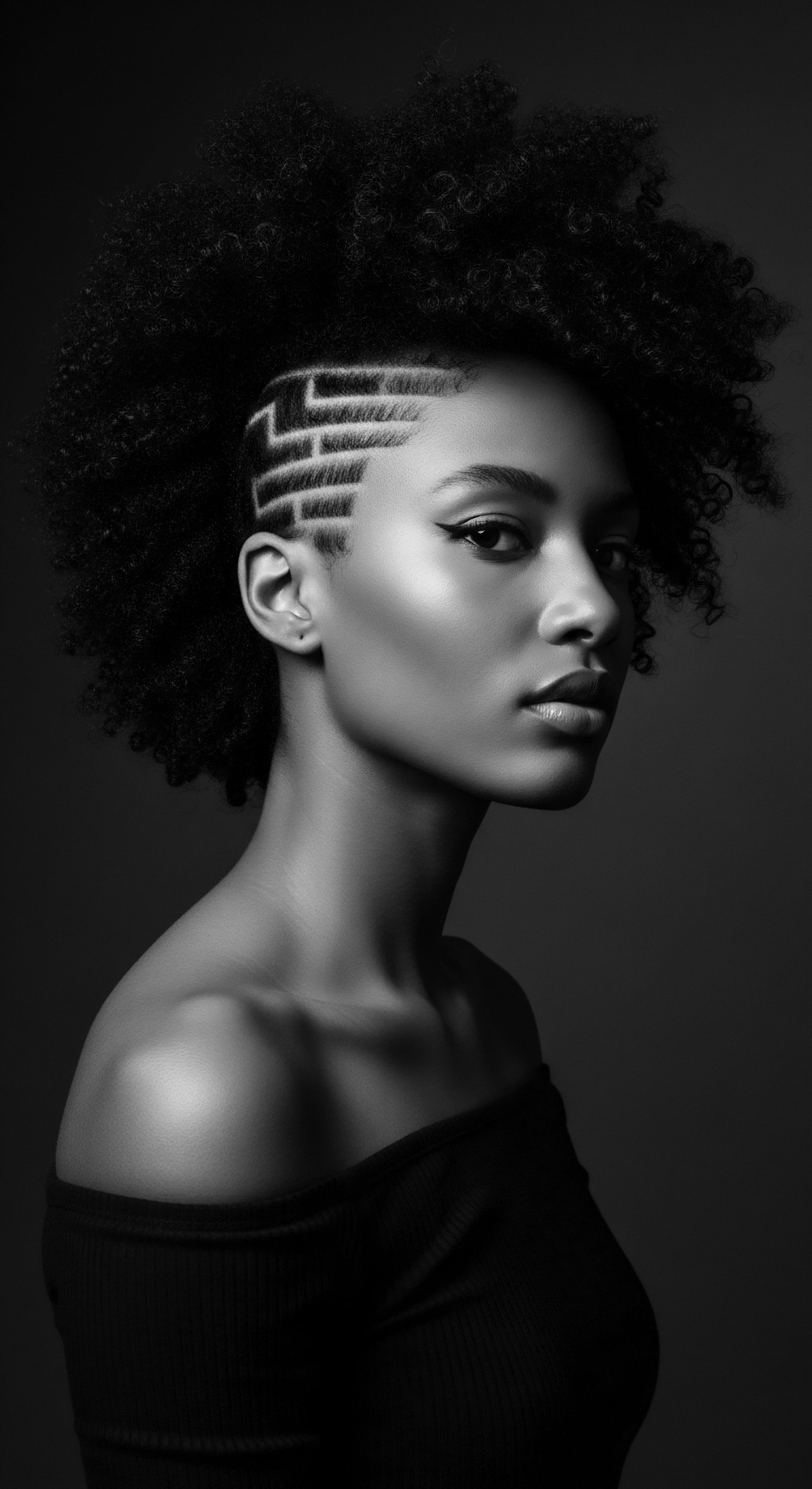
Ritual
The application of these heritage materials extended beyond mere function, becoming intertwined with ritual and community. The methods, tools, and styles developed around hair protection speak volumes about the collective wisdom of our forebears. These were not solitary acts but communal practices, often performed with care and intention, connecting individuals to their lineage and their place within society. The careful preparation of plant-based ingredients, the rhythmic motions of braiding, the sharing of ancestral recipes—all contributed to a rich cultural context around protecting textured hair from the world’s harshness.

The Hands That Shaped Protection
Traditional styling techniques, often requiring hours of communal effort, served as a primary defense for hair. Styles like braids, twists, and locs were not merely aesthetic choices; they were strategic encapsulations of the hair, minimizing direct exposure to sun, wind, and dust. By securing the hair in these configurations, vulnerable ends were tucked away, reducing mechanical stress and environmental assault. This approach also extended the time between washes, thereby preserving the hair’s natural oils and preventing excessive manipulation.
In many African cultures, braiding carried significant cultural weight, reflecting social status, age, marital standing, or even tribal identity. The time spent in these sessions allowed for the transfer of knowledge, for stories to be told, and for the communal bonds to deepen. The materials employed to aid these styles, from plant fibers used to extend length to various oils and butters applied for lubrication and hold, were integral to their protective efficacy.
Hair styling, a blend of artistry and necessity, served as a primary protective measure for textured hair through generations.
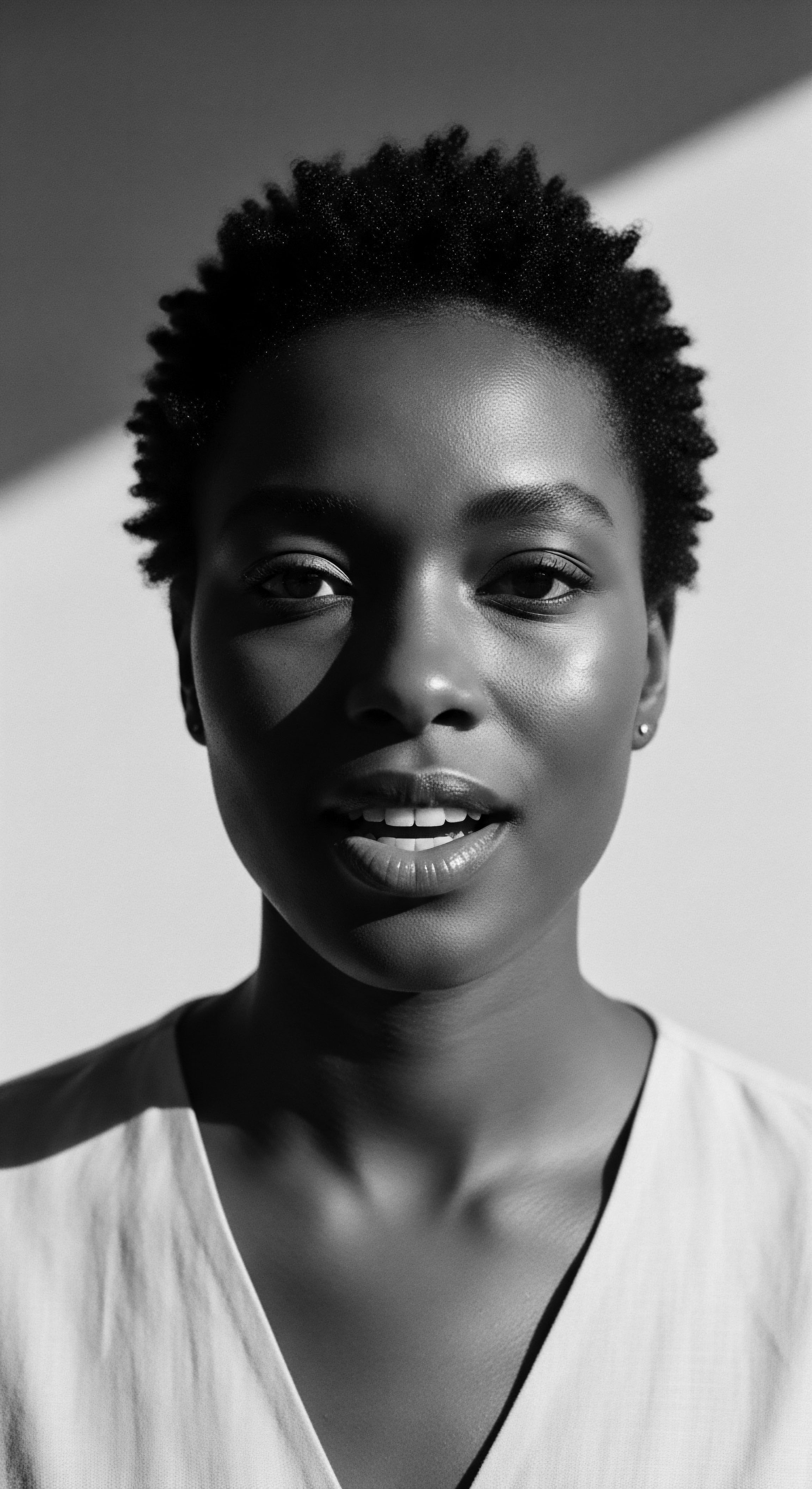
Tools and The Protective Touch
The tools used in traditional hair care were also crafted with an eye toward both utility and reverence. Wide-toothed combs, often carved from wood, bone, or ivory, were designed to navigate the natural coils of textured hair without causing undue breakage. Unlike finer combs, these implements could gently separate strands, aiding in detangling and the even distribution of protective balms and oils. The careful crafting of these tools underscores the profound respect held for hair within these cultures.
The application methods themselves were deliberate and purposeful. Oils and butters were often warmed, allowing for easier distribution and deeper penetration into the hair shaft. These warming rituals, sometimes involving natural heat from the sun or gentle friction, enhanced the material’s ability to coat and condition the hair. For example, Karkar oil , a traditional blend from Chad and Sudan, often includes ingredients like sesame oil, tallow, ostrich oil, and honey wax.
This mixture, when applied, protects by sealing in moisture and preventing breakage, while also offering benefits for scalp health. The rich fatty acids in Karkar oil coat the hair, creating a barrier against environmental stressors.
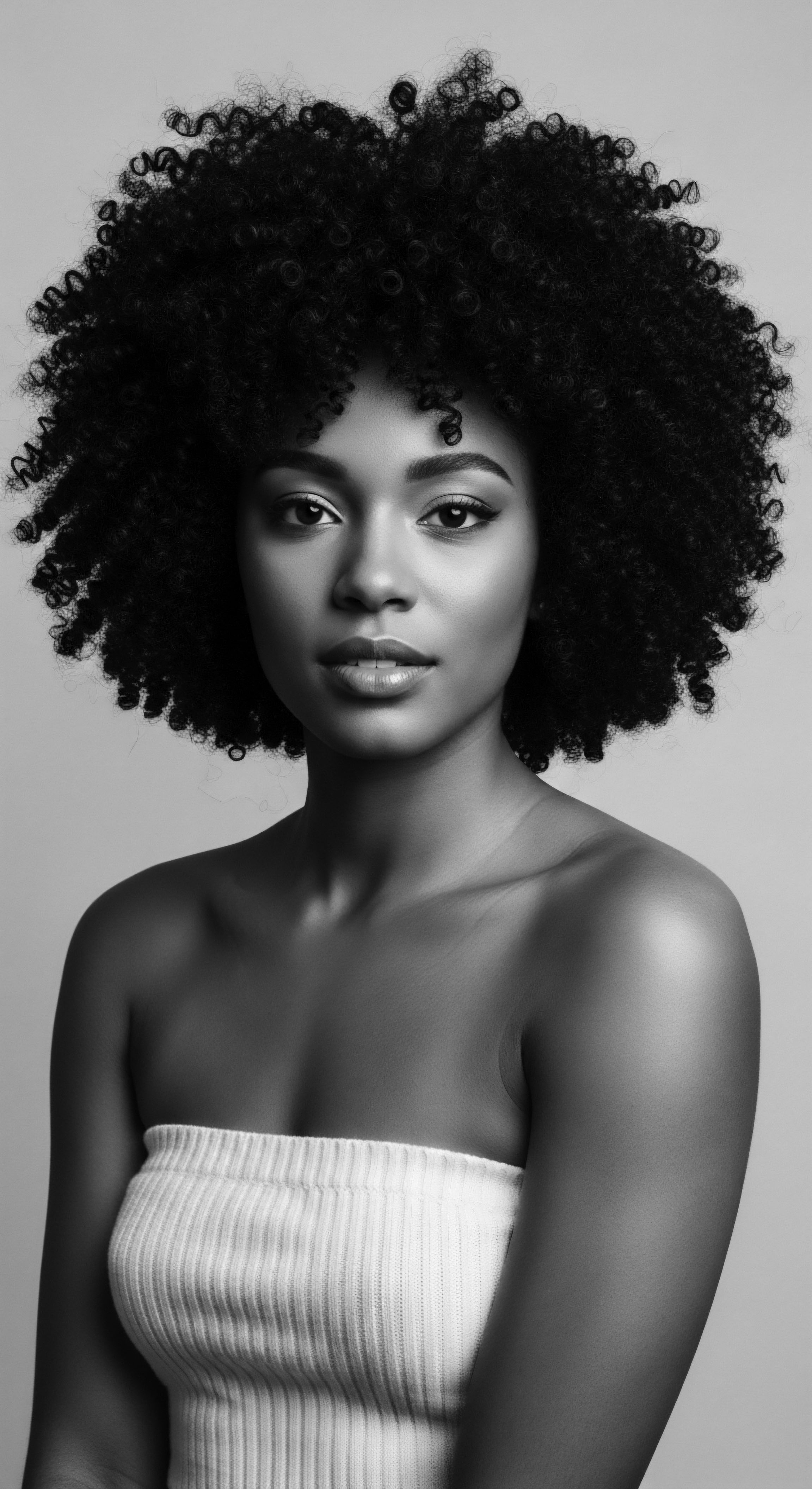
What Traditional Adornments Shielded Strands?
Beyond direct material application and styling, adornments played a significant role in providing an additional layer of shielding. Headwraps, for instance, are not simply fashion statements; they are powerful protective garments. Across Africa and the diaspora, headwraps crafted from natural fabrics like cotton, linen, or even silk, covered the hair, shielding it from intense sun, dust, and wind. This practice maintained the hair’s moisture balance, prevented excessive dryness, and kept intricate styles intact for longer periods.
| Covering Type Headwraps (various fabrics) |
| Protective Function Shields hair from direct sun, wind, dust; preserves moisture; maintains styles. |
| Covering Type Wigs and Hairpieces (natural fibers) |
| Protective Function Offers a complete physical barrier to environmental elements; reduces manipulation of natural hair. |
| Covering Type Hairnets/Snoods (fine mesh or fabric) |
| Protective Function Kept hair contained, protected from snagging and environmental debris, especially during work or sleep. |
| Covering Type These coverings represent a long legacy of protecting textured hair through physical barriers, reflecting cultural adaptations to diverse climates. |
The practice of using head coverings speaks to a profound understanding of environmental elements. In sun-drenched regions, a wrap diffused harsh UV radiation, preventing damage to the hair protein and color. In dusty climates, it kept abrasive particles from settling onto the strands and scalp. The variety of ways these coverings were styled also reflected social nuances, serving as cultural markers while providing essential protection.
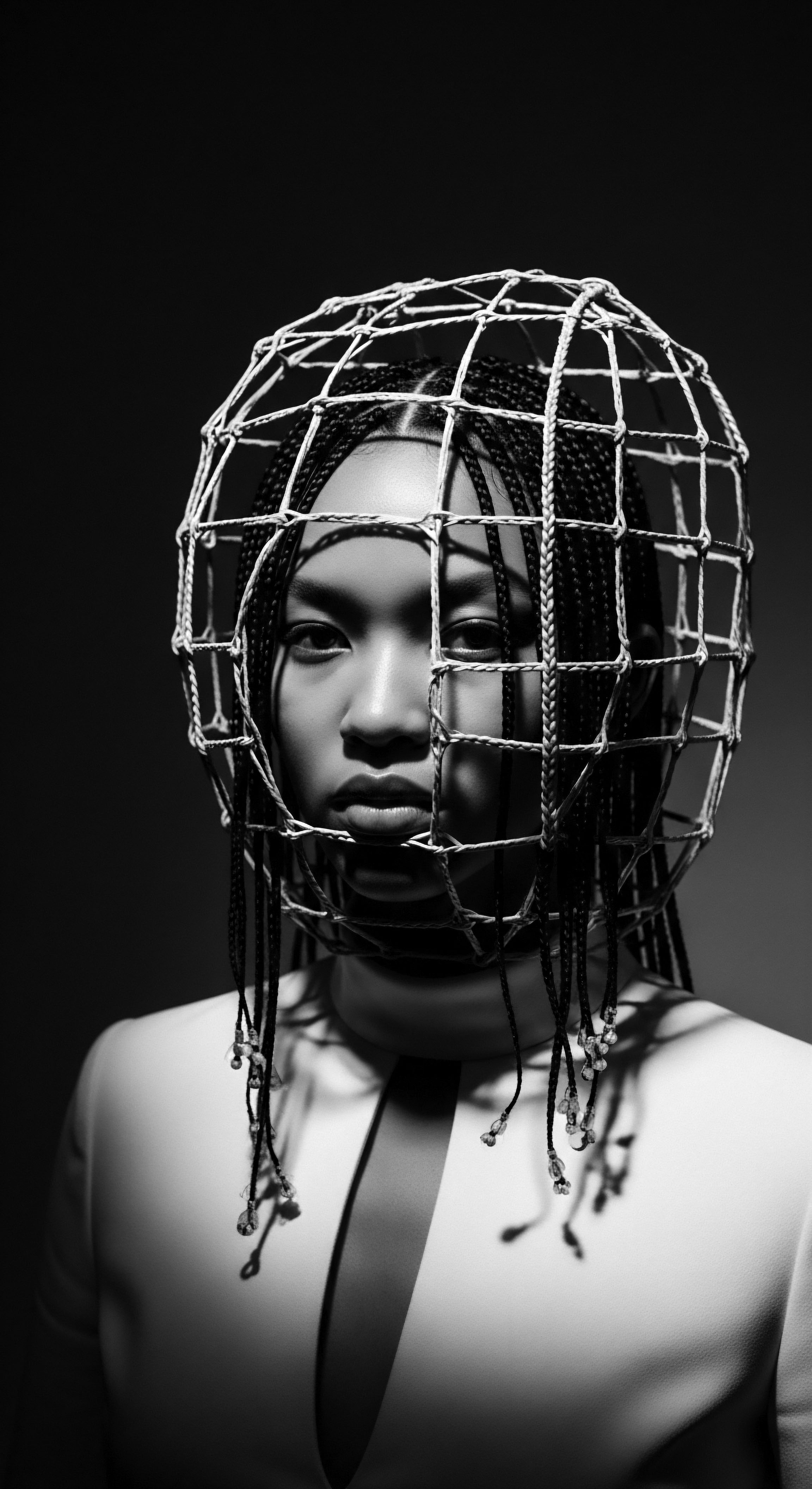
Relay
The wisdom encoded within ancestral hair care practices for protecting textured hair transcends mere anecdote; it holds scientific truths now being rediscovered and affirmed by modern inquiry. The interplay of environmental factors, hair biology, and the chosen materials formed a cohesive system, safeguarding hair health over generations. This long journey, from the earth’s bounty to the crown, represents a continuous dialogue between people and their surroundings, a relay of knowledge honed by lived experience and communal understanding.
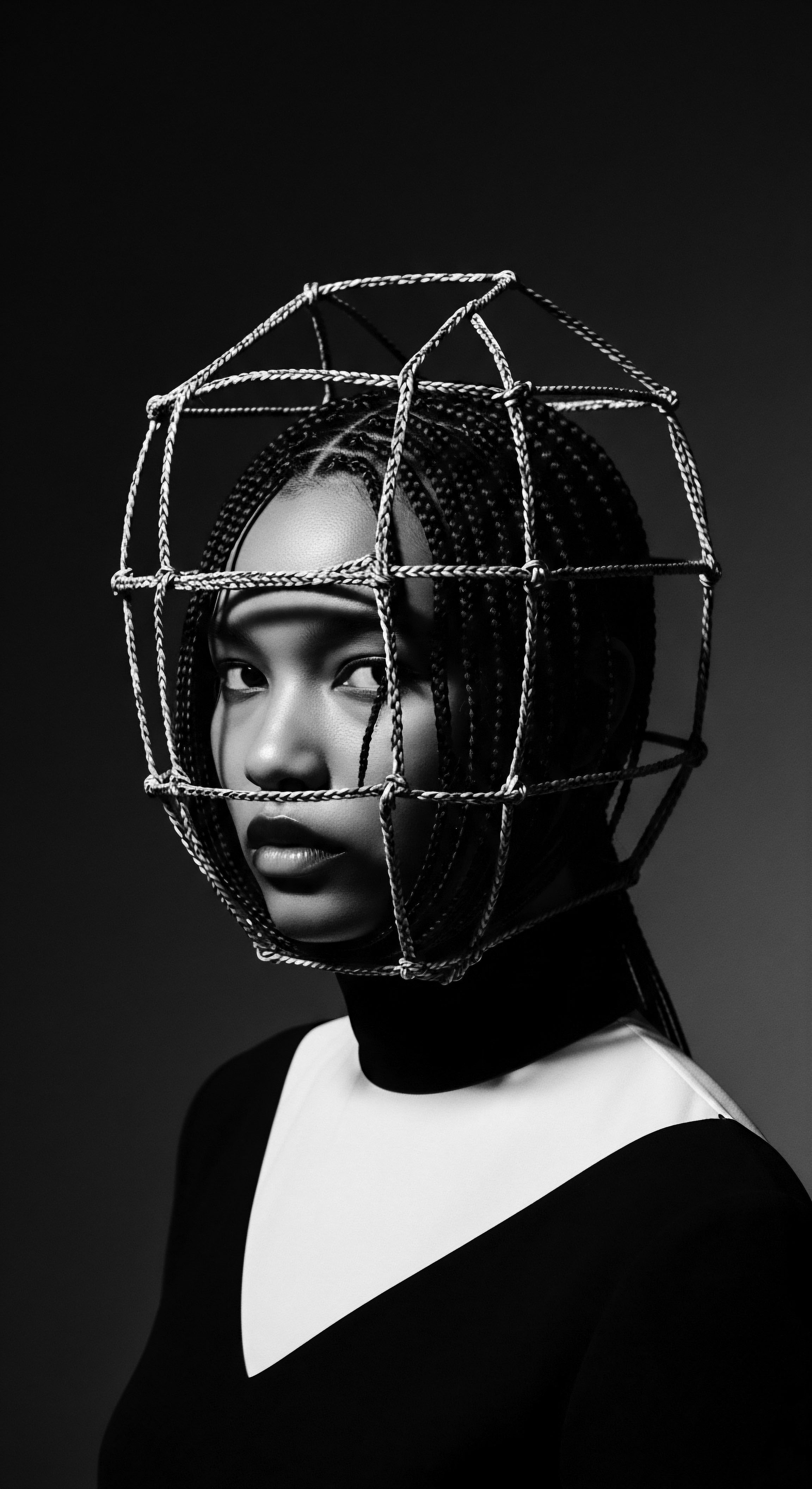
The Chemistry of Natural Shielding
Many traditional materials possess chemical properties that offer inherent protection. Consider the fatty acids present in natural butters and oils. These lipids, specifically saturated and monounsaturated varieties, have a molecular structure that allows them to coat the hair shaft effectively. They create a hydrophobic barrier, repelling water (and thus humidity) and preventing excessive moisture loss in dry conditions.
This emollient effect smooths the cuticle, reducing friction and environmental damage. Shea butter, for instance, is rich in vitamins A, E, and F, and its fatty acid composition helps fortify hair structure and acts as a barrier against environmental stressors like pollution and UV rays. Its efficacy in repairing and protecting the hair’s lipid barrier is well-documented.
Beyond physical barriers, some plant-based materials provided direct antioxidant or anti-inflammatory benefits to the scalp and hair. Herbs like henna or amla, used in various traditional contexts, contain compounds that protect against oxidative stress induced by environmental pollutants or UV radiation. These compounds scavenge free radicals, minimizing cellular damage to hair follicles and strands.
A study on plants used for hair and skin care in Ethiopia identified 17 plant species, with the most frequently utilized part being leaves, and water as the primary medium for preparations, often used topically for hair treatments or as leave-in conditioners. Such botanical infusions not only cleanse but also impart protective qualities.
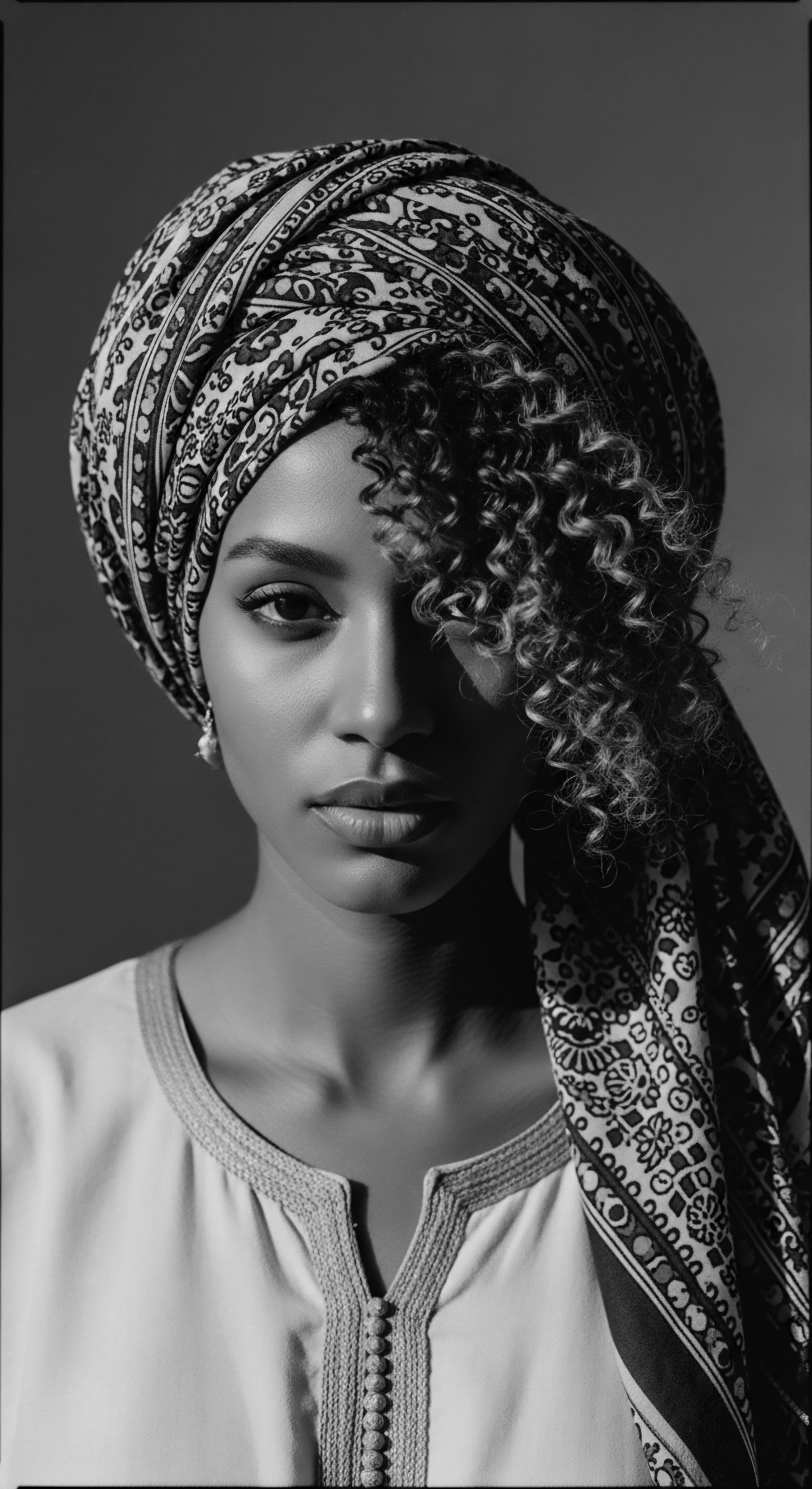
How Did Traditional Practices Counter Environmental Aggressors?
Traditional practices were exquisitely attuned to mitigating specific environmental challenges. In regions with intense solar radiation, materials that offered natural UV filtering were prioritized. Certain oils and clays, for example, could absorb or reflect UV light, preventing the sun’s damaging effects on keratin proteins and hair color.
The reddish hue of otjize used by the Himba people, a mixture of ochre and butterfat, provides not only a distinct aesthetic but also physical protection against the strong sun. The practice of head covering, as mentioned, further complemented these material applications by offering a physical block.
- Sun Protection ❉ Materials like ochre-based pastes and certain plant oils (e.g. coconut oil, Karkar oil with sun-blocking properties) provided physical barriers and natural UV filters. Headwraps augmented this by creating a direct shield.
- Wind and Dust Shielding ❉ Heavier butters and thick pastes, like shea butter and Chebe paste, coated hair strands, preventing dryness and abrasion caused by constant wind exposure and the settling of dust particles.
- Humidity Control ❉ While not always explicitly stated, the sealing properties of natural oils and butters helped hair manage moisture fluctuations, preventing excessive swelling in high humidity or severe desiccation in arid air.
- Scalp Health ❉ Ingredients with antimicrobial or anti-inflammatory properties, such as certain plant extracts or the components of Karkar oil (e.g. sesame oil, neem), addressed scalp irritation, dandruff, or infections that could otherwise compromise hair growth and resilience.

Ancestral Wisdom and Modern Validation
The efficacy of these traditional materials and practices is increasingly validated by modern science. For instance, the fatty acid profiles of shea butter, with its oleic, stearic, and linoleic acids, are known to moisturize deeply and create a protective barrier that reduces environmental harm. Coconut oil, a staple in many ancestral hair care regimens, contains lauric acid, a medium-chain fatty acid that uniquely penetrates the hair shaft, reducing protein loss and offering a protective layer. This scientific understanding affirms what generations of practitioners already knew through intuitive knowledge and observation.
A specific historical example demonstrating this deep understanding is the enduring practice of the Basara women of Chad with Chebe powder. Their hair often reaches waist-length, a testament to the effectiveness of their protective regimen. Ethnographic studies describe their meticulous application of the Chebe mixture, which significantly reduces breakage and allows for remarkable length retention despite challenging desert conditions. This ritual, passed down through generations, effectively counters the environmental elements that would otherwise shorten hair, proving a direct link between ancestral practice and observable hair health outcomes.
| Traditional Material/Practice Shea Butter |
| Ancestral Understanding (Heritage) Nourished, softened, protected hair from harsh sun and wind, kept hair pliable. |
| Modern Scientific Insight (Relay) Rich in fatty acids (oleic, stearic, linoleic) that seal the cuticle, reduce moisture loss, and provide UV protection; vitamins A, E, F as antioxidants. |
| Traditional Material/Practice Chebe Powder (Chad) |
| Ancestral Understanding (Heritage) Prevented breakage, allowed hair to grow long in dry desert climate. |
| Modern Scientific Insight (Relay) Mixture of plant-derived ingredients (e.g. croton zambesicus, cloves, resins) that coat the hair shaft, reducing friction and moisture evaporation; reinforces the hair strand. |
| Traditional Material/Practice Karkar Oil (Chad/Sudan) |
| Ancestral Understanding (Heritage) Moisturized, reduced breakage, soothed scalp, promoted hair strength. |
| Modern Scientific Insight (Relay) Contains sesame oil (fatty acids, antioxidants), animal tallow, honey wax; forms a protective, moisture-trapping barrier; anti-fungal/anti-bacterial properties for scalp. |
| Traditional Material/Practice Headwraps/Scarves |
| Ancestral Understanding (Heritage) Physical barrier from sun, dust, and wind; preserved hairstyles. |
| Modern Scientific Insight (Relay) Reduces direct exposure to UV radiation, particulate matter, and mechanical abrasion from wind; helps maintain internal humidity levels of hair. |
| Traditional Material/Practice The consistency between traditional knowledge and contemporary scientific evidence highlights the deep empirical understanding cultivated by our ancestors regarding hair health and environmental defense. |
The continuous exchange between traditional understanding and contemporary validation speaks to the enduring relevance of heritage practices. These protective materials and methods stand as living proof of a deep, symbiotic relationship between humanity and the environment, a testament to the ancestral brilliance in stewarding hair health against the elements.
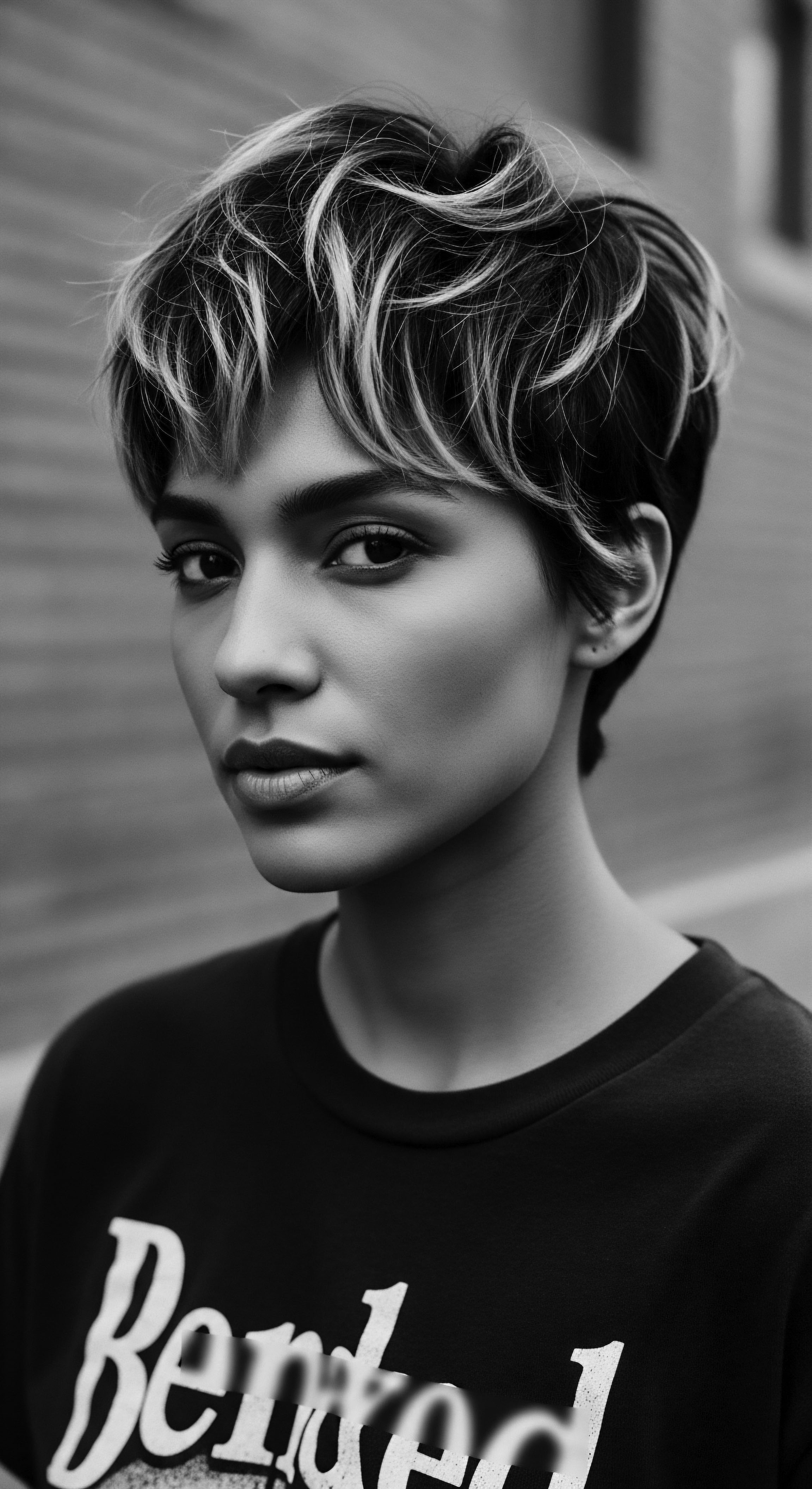
Reflection
As we close this chapter on the historical shield for textured hair, a profound reverence settles upon the spirit. The story of what traditional materials guarded our strands from environmental harshness is far more than a catalog of plants or practices. It embodies the very ‘Soul of a Strand,’ a deep connection to lineage, resilience, and the earth’s nurturing embrace.
Each coil and curl carries the echoes of a heritage where hair was not simply hair; it was a living chronicle, a cultural map, and a testament to the wisdom passed through spoken word and gentle touch. Our ancestors, through keen observation and symbiotic living, developed a sophisticated system of care that speaks to a holistic understanding of wellbeing, where protection was interwoven with identity and community.
This journey through the materials of old reminds us that the quest for healthy hair is, at its heart, a return to source. It is about understanding the enduring intelligence held within our ancestral practices, recognizing how sunlight, wind, and soil shaped both our hair’s physical characteristics and the responses to its needs. The very act of engaging with these traditional materials, even in modern contexts, becomes an affirmation of continuity, a gentle nod to the ingenious hands that first extracted oils, crafted protective styles, and wove nature’s bounty into a shield for our crowns. The lessons learned from these historical shields invite us to honor the past while shaping a future where textured hair continues to be celebrated, protected, and revered, its heritage a luminous guide for generations to come.
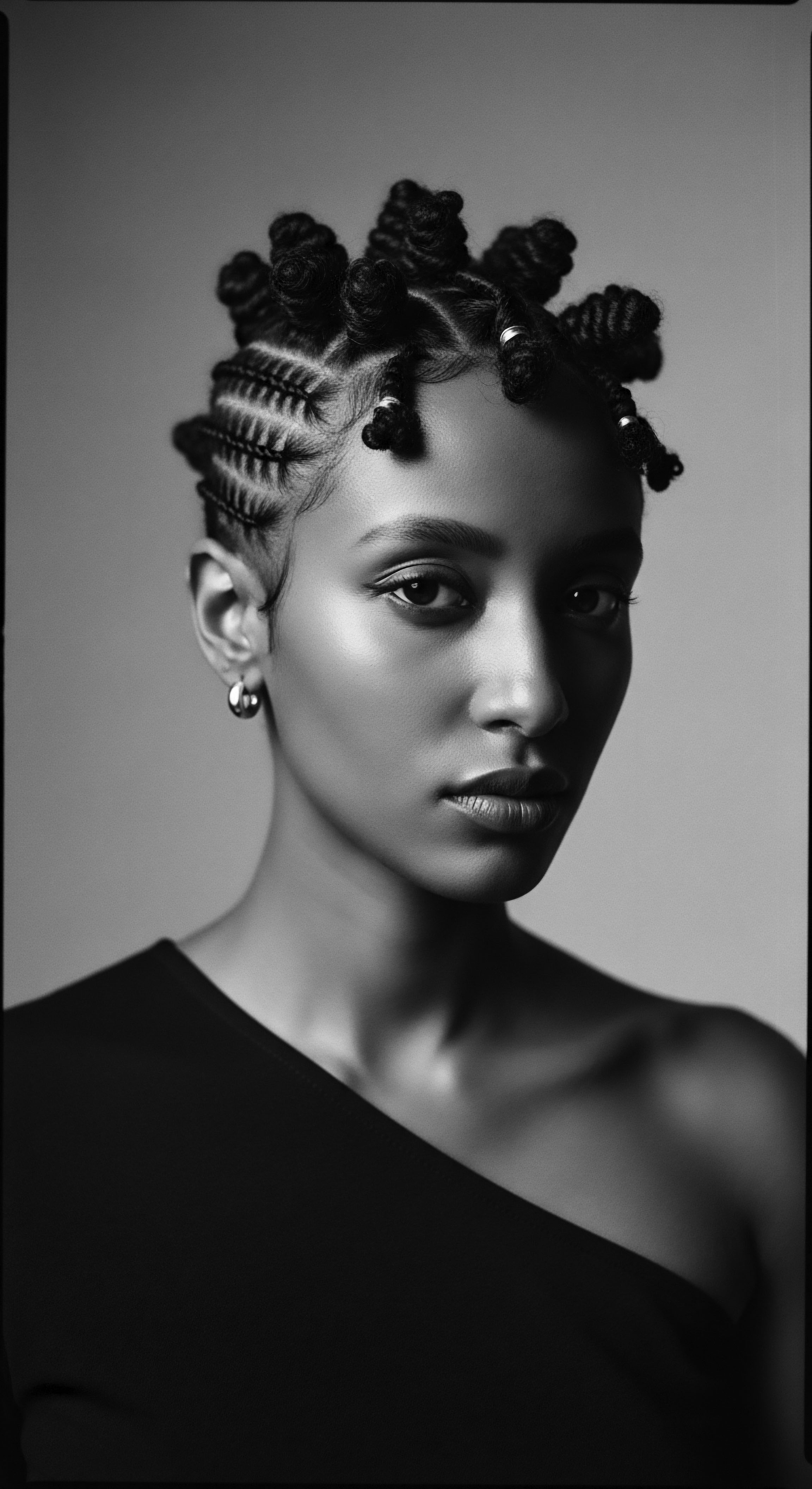
References
- Adeyemi, S. & Sani, A. (2018). Ethnobotanical survey of plants used for hair care in Southwestern Nigeria. Journal of Medicinal Plants Research, 12(30), 498-508.
- Akihisa, T. Kojima, N. Kikuchi, O. & Yasukawa, K. (2010). Anti-inflammatory and anti-tumor-promoting effects of triterpene alcohols and steroids from shea butter. Journal of Oleo Science, 59(12), 673-678.
- De la Torre, J. & Wilson, E. (2007). The history of African hair ❉ A cultural journey. Smithsonian National Museum of African Art.
- Eke, M. O. (2014). Ethnomedical importance of indigenous plants in African traditional hair care practices. Journal of Pharmacognosy and Phytochemistry, 3(4), 160-165.
- Gore, M. (2017). African hairstyles ❉ Ancient origins to modern styles. Black Studies Press.
- Koffi, K. & Balo, J. (2010). Shea butter ❉ A review of its traditional uses, processing, and composition. African Journal of Food Science, 4(8), 441-450.
- Leung, A. Y. & Foster, S. (1996). Encyclopedia of common natural ingredients used in food, drugs, and cosmetics. John Wiley & Sons.
- Okoro, N. (2019). The cultural symbolism of African hairstyles. International Journal of African Studies, 4(1), 55-70.
- Parker, E. C. (2016). Hair story ❉ Untangling the roots of Black hair in America. St. Martin’s Press.
- Robins, A. (2017). Ancient African hairstyles and their meaning. Routledge.
